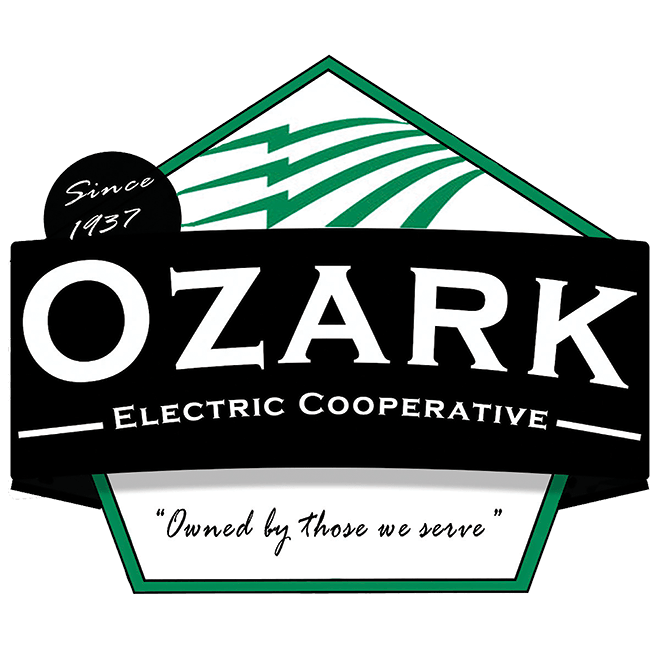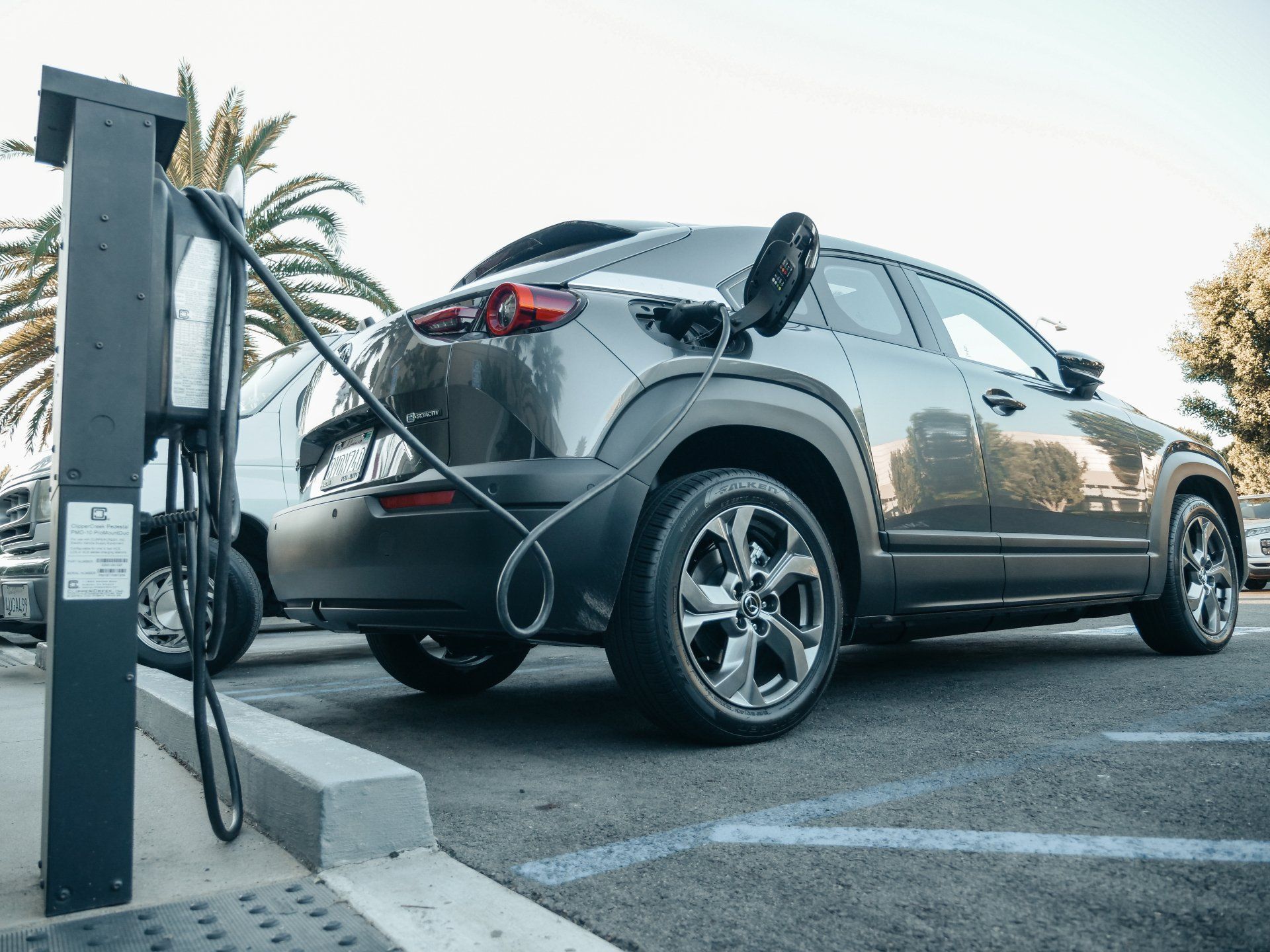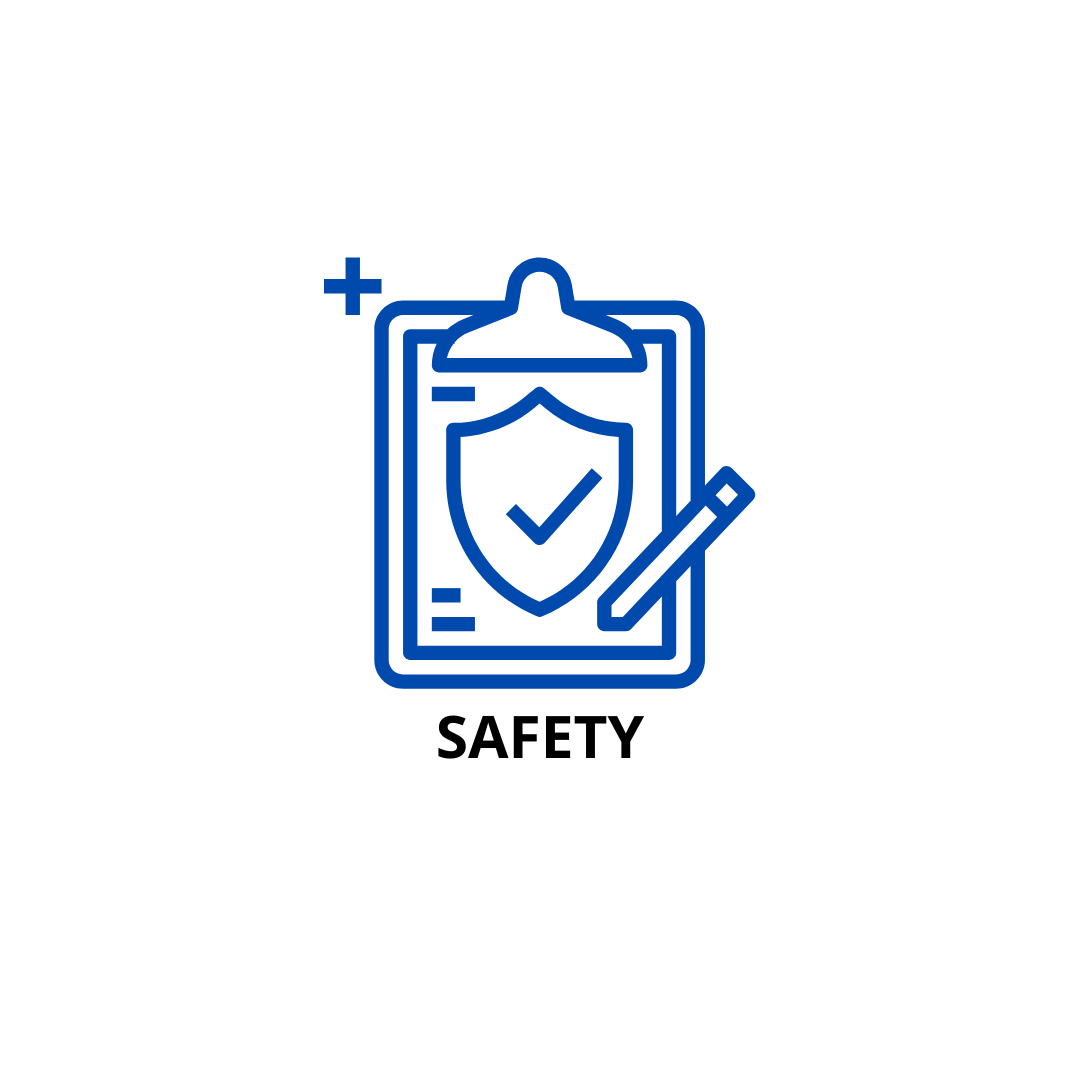Current Outages
Report An Outage
-
Before Reporting An Outage
- Check your lights and appliances in other rooms. If you still have power in some areas, most likely a circuit breaker has opened or a fuse has blown - which could be a sign of overload wiring or a defective appliance.
- If your entire home is without power, check to see if your neighbors have power.
- If the outage is not confined to your residence or business, report the outage to Ozark Electric Cooperative. Dispatchers are on duty 24 hours a day, 7 days a week to assist you.
-
Reporting An Outage By Phone
- Making sure you have a current phone number on our system BEFORE an outage occurs greatly speads up the process of reporting a power outage. If this information is up to date, our automated phone system will identify your location immediately. Then just follow the phone prompts to report the outage from your phone keypad. 1-800-947-6393
- Should you select the option to talk to a dispatcher in person, having your account number ready to give will greatly speed up the outage reporting process. Your account number can be found on your billing statement.
-
Reporting An Outage Online
- You can also report an outage online by clicking the SmartHub
- How Outages are addressed Click Here
-
Weathering The Storm
Here are some helpful safety tips for weathering the storm without power:
- Keep your refrigerator and freezer closed. Food will last more than 72 hours if the door is not continuously being opened.
- Turn of every inside light except one.
- Turn down your thermostat.
- Close windows and tape drapes to save heat.
- Pick one room to stay in on the warm side of the house (one with a fireplace is best).
- Close the doors to the rest of the house and use blankets to insulate your windows.
- Never use your gas kitchen range/ oven for heat.
- Turn off and unplug unnecessary appliances.
- When the power comes back on, slowly switch your appliances and lights back on and gradually return your thermostat to its normal setting.
Preparation Kit
-
Before The Storm
Prepare a severe weather emergency kit. When Mother Nature and severe weather hits that result in a power outage, you will be safer and less inconvenienced if you have the following emergency supplies on hand:
- Weather radio
- Flashlight with fresh batteries
- Radio with fresh batteries
- Extra batteries
- Lighter
- Candles
- Matches
- Blankets
- Wind-up clocks
- Firewood and kindling
- Manual can opener
- Charcoal grill with charcoal
- Paper plates and plastic utensils
- Non-perishable food
- Bottled water
-
Weathering The Storm
Here are some helpful safety tips for weathering the storm without power:
- Keep your refrigerator and freezer closed. Food will last more than 72 hours if the door is not continuously being opened.
- Turn of every inside light except one.
- Turn down your thermostat.
- Close windows and tape drapes to save heat.
- Pick one room to stay in on the warm side of the house (one with a fireplace is best).
- Close the doors to the rest of the house and use blankets to insulate your windows.
- Never use your gas kitchen range/ oven for heat.
- Turn off and unplug unnecessary appliances.
- When the power comes back on, slowly switch your appliances and lights back on and gradually return your thermostat to its normal setting.
Downed Powerlines
-
Hop Away
Electricity is always seeking a way to get to the ground, and the human body which is mostly water, is a ready conductor of electricity. Should you come upon a downed or low-hanging line, the proper way to move away from the line is to hop away, keeping both feet together and your arms crossed on your chest. This ensures that your body stays in the same "ring" of voltage and may save you from potential shock or electricution.
-
Vehicle Accident
If you are in a vehicle that a powerline falls across or near, DO NOT leave the vehicle. Tell others to stay away from the vehicle and to call 911. If you must leave the vehicle do to a fire or other emergency, jump out of the vehicle with both feet together and avoid contact with the live vehicle and the ground at the same time. This way you can avoid becoming the path of electricity from the car to the ground. Once you are outside the vehicle, hop away from it keeping both feet together in the method explained above.
-
Keep Hands Off
If you are in a vehicle with downed power lines nearby and you see someone approaching to help, tell them to stay away. Or if you see someone who is in direct contact with the downed power line, do not touch the person or you could become the next victim. In both instances, 911 should be called.
-
Don't Move It
Especially after a storm, it is tempting to want to help by moving brush or other debris off of a downed power line. This is a DANGEROUS idea. Do not attempt to move a downed power line or anything in contact with the line. Do not use another object such as a stick or broom to try to remove line or debris. If the object is even slightly wet, it can conduct electricity and electrocute you.
-
Water And Electricity
A dangerous mix. Be careful not to put your feet near or run into water where a downed power line is located. If flooding has occured, it may be difficult to see the line under the water. Water is an excellent conductor of electricity, and you can be electrocuted as soon as your feet hit the water.
-
Do Not Drive
Do not drive over downed power lines.
-
Clean Up Cautiously
When cleaning up after a storm, watch out for downed or low-hanging lines above, below, or anywhere near you. If possible, wait to do the clean up until after the Cooperative has been there to repair the lines.
Generator Safety
-
Deadly To You
Each year people die from using portable generators following a weather related crisis. A warning affixed to portable generators by the Consumer Product Safety Commission states: "using a generator indoors will kill you in minutes!". According to the Commission, the engine of a portable generator can emit more carbon monoxide than the engine of a modern car. You cannot see or smell carbon monoxide, so it is especially dangerous.
-
Deadly To Linemen
Consumers are also warned that if you use an emergency standby generator during power outages, improper generator hookup can cause fatal injury to our line workers and serious problems in electrical service. Connecting a portable generator to home wiring can cause current flow from the generator onto your electric lines that can injure or kill your Ozark Electric employees who are working to restore power on the line.
-
Double-Throw Switch Required
To avoid injury or death of line workers by improper connection, your generator should only be installed by licensed electricians and in compliance with the National Electrical Code and must have a double-throw switch to operate safely. A double-throw switch transfers electrical power from the line to the generator. As explained above, if a double-throw switch is not used, feedback from the generator voltage on power lines could endanger the lives of line crews working to restore your power. Please contact us if you have ANY questions regarding installation of a double-throw switch on your standby generator. It could save a life!
Addressing Outages
Every electric cooperative follows a basic principle when it comes to restoring power — priority goes to the lines that will get the most people back in service the quickest. This usually begins with main lines from the substations that can affect 200-600 members, and continues out to tap lines, which may affect 30-200 members, and then to individual service lines affecting just 1-5 members
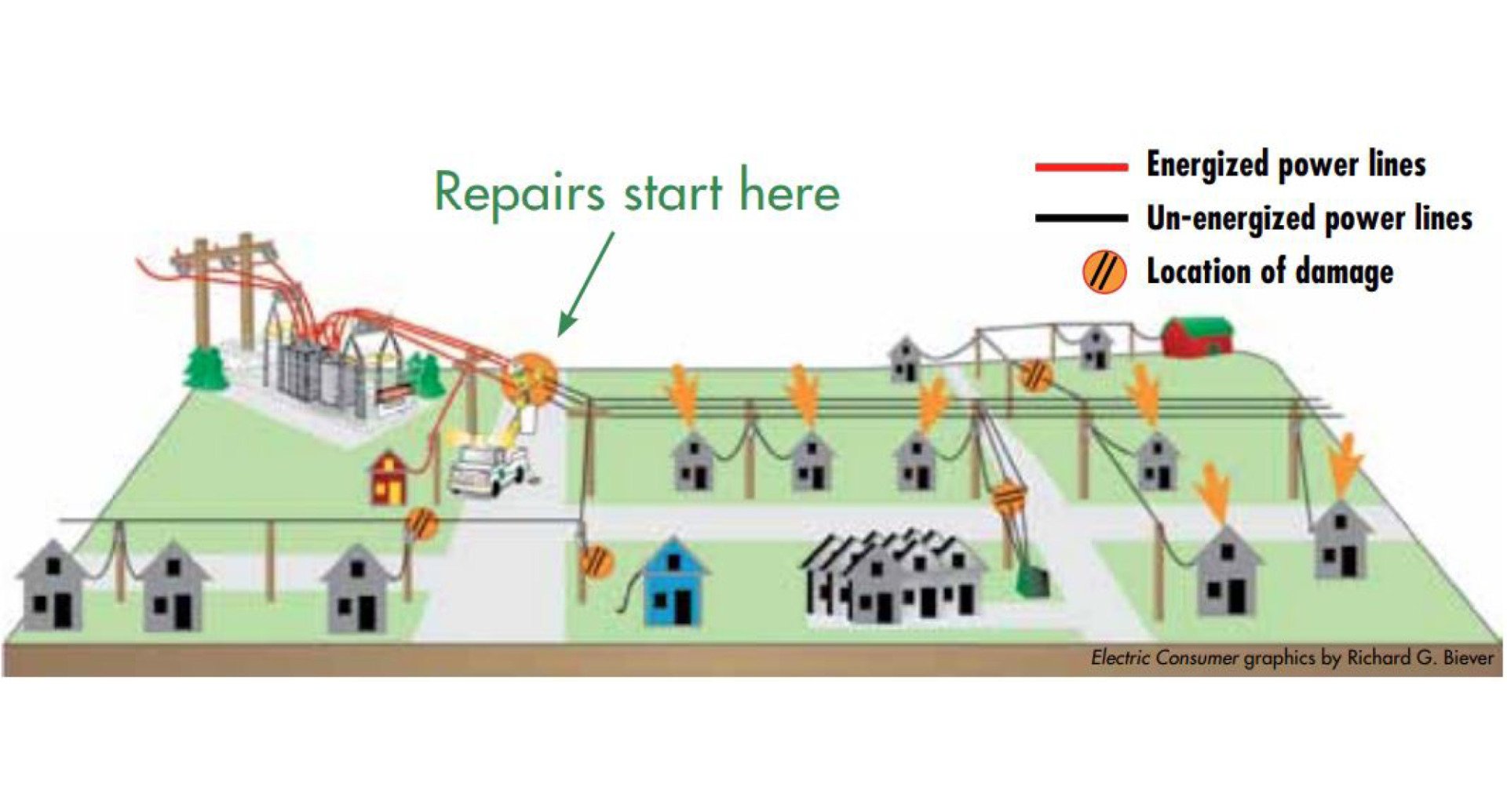
Step 1
All repairs start with the main line. A large number of members (shown with orange arrows) will have power returned once the main line is fixed. All other repairs would be pointless until this line is restored as it feeds all the other lines.
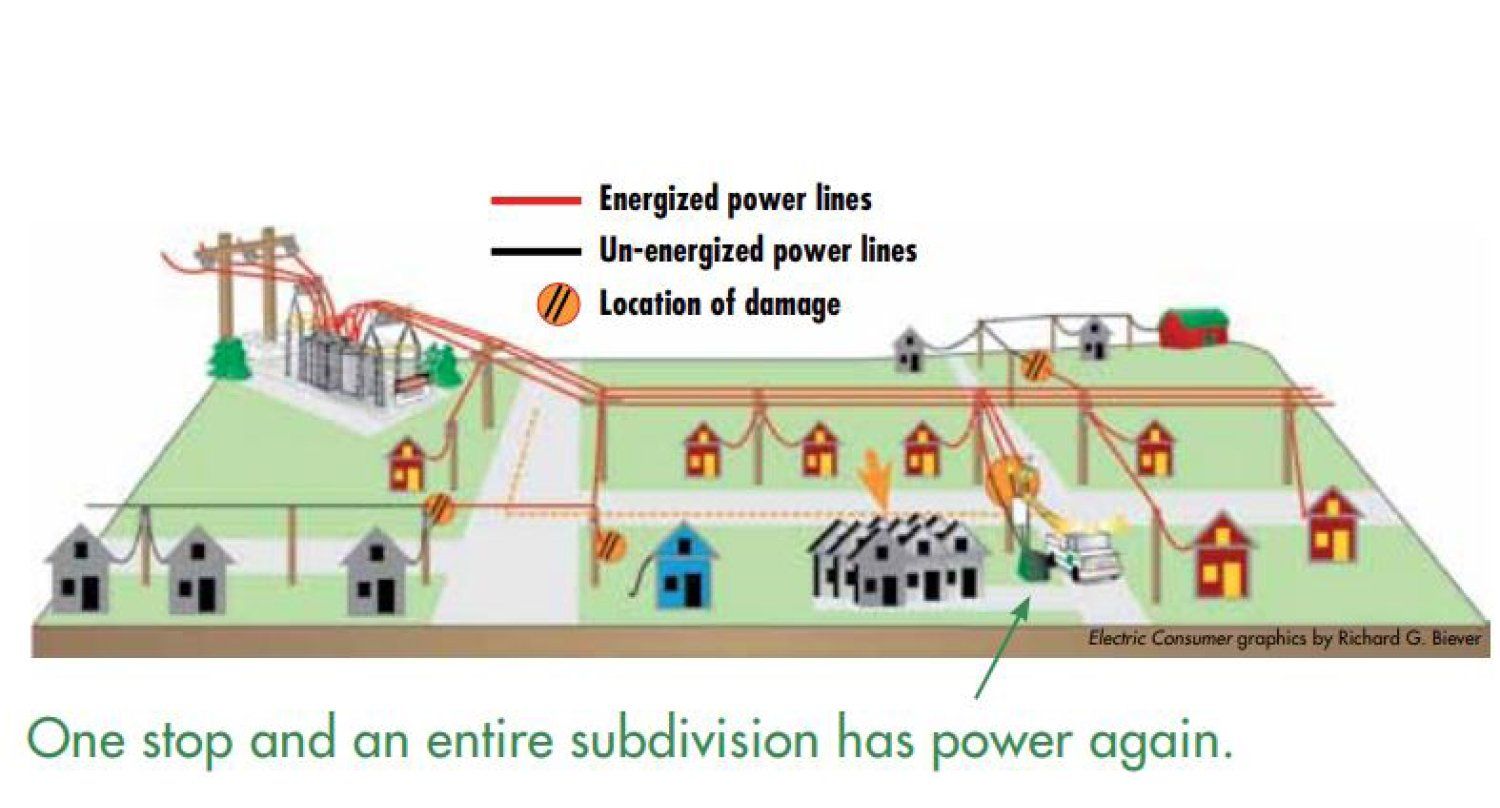
Step 2
With the main line restored (now shown in red), the line crew can isolate other damage and prioritize repairs. Though a couple of repairs were closer, fixing the line that serves this subdivision down the road will get a larger number of consumers on more quickly.
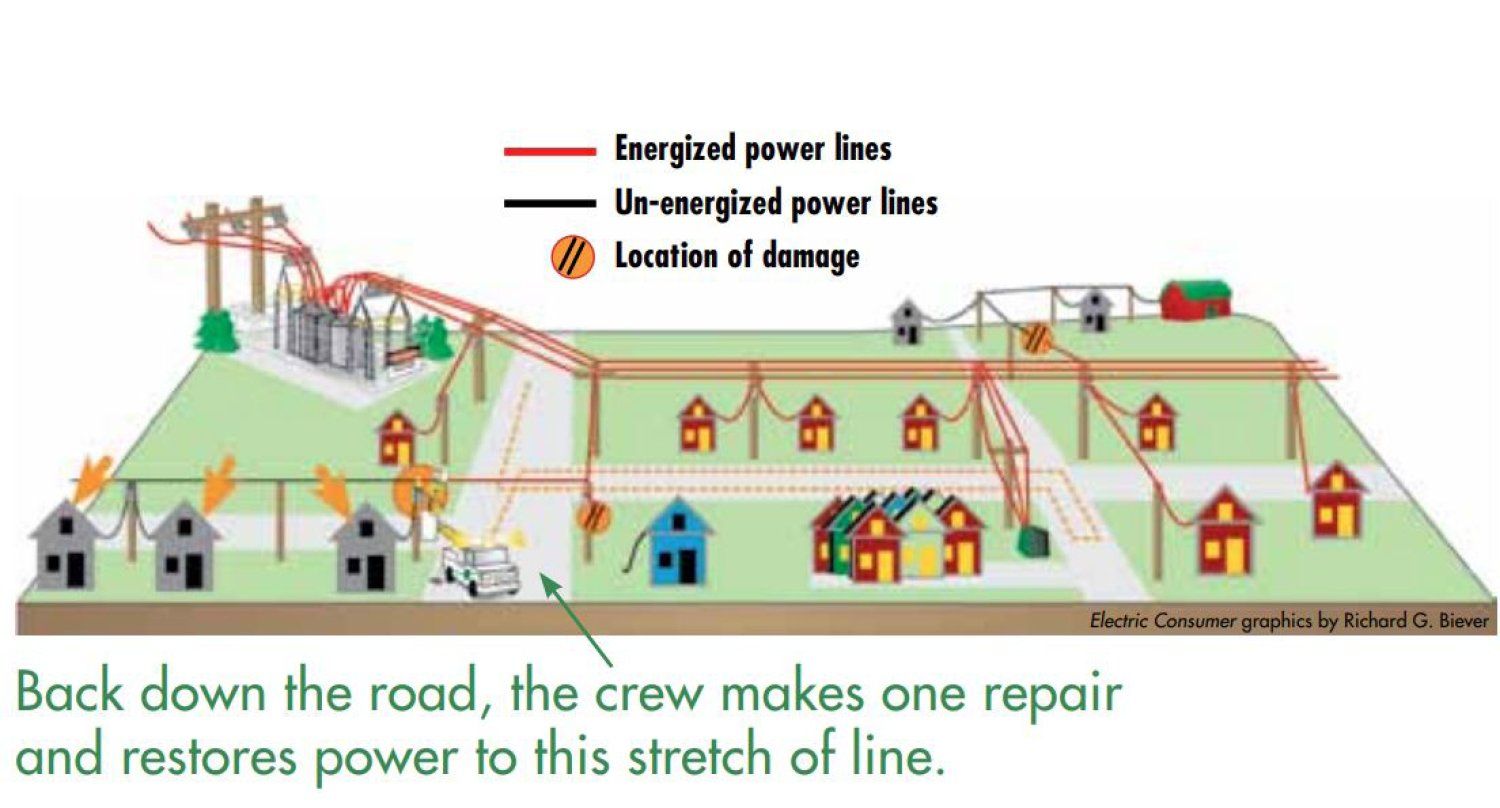
Step 3
Moving back down the road to fix this tap line will restore electricity to the three homes marked with arrows.
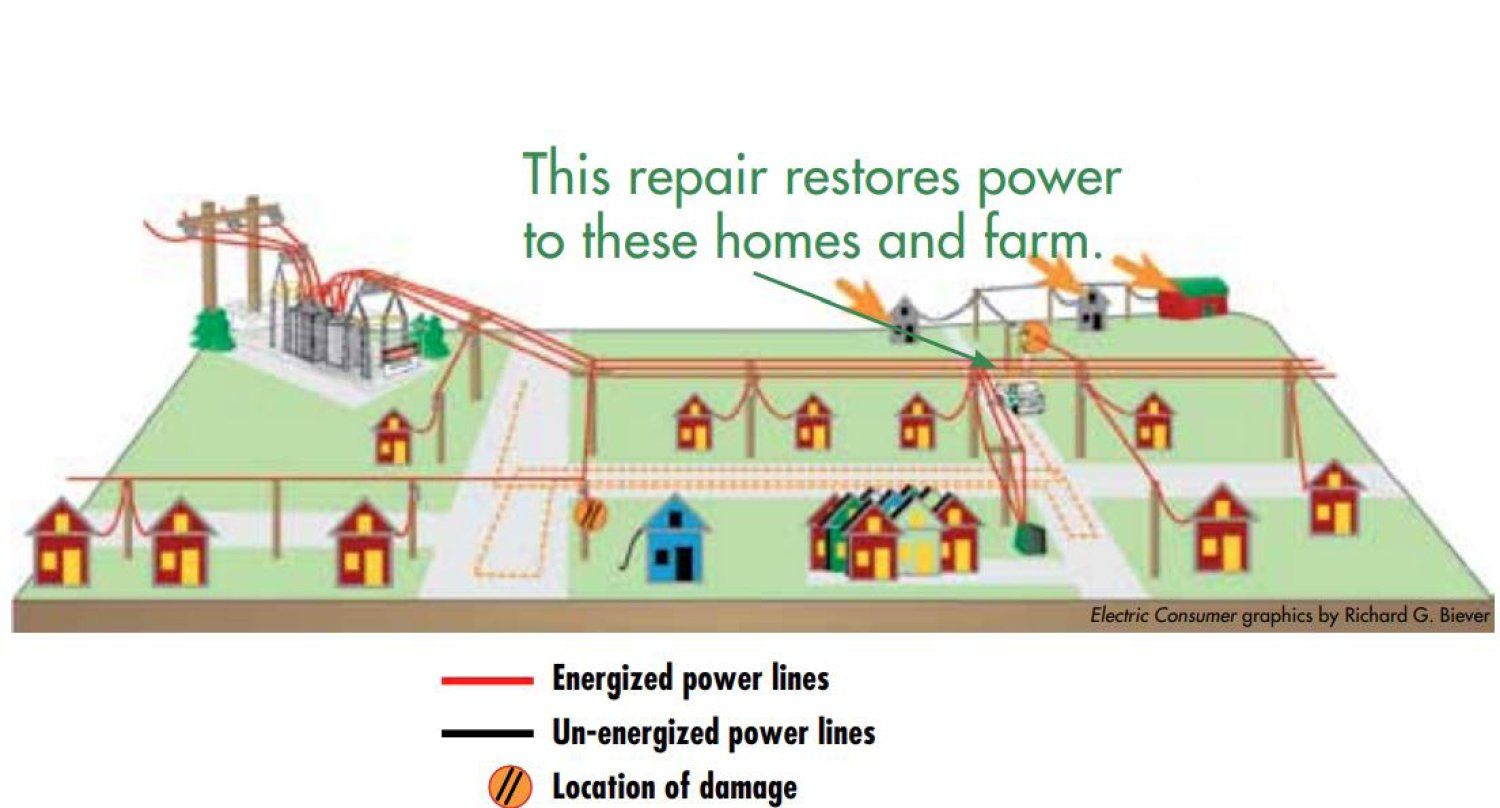
Step 4
A smaller tap line serving a number of homes and a farm on the hill is next on the list for the line crew. The move probably doesn't make the folks in the blue house too happy. They've seen the crew driving by thier house and working right across the road. They see lights in homes of all thier neighbors but they still don't have power! That's because even though electricity is coming to their pole (that happened with the first repair in step 1), the service line from their pole to thier meter is damaged. Individual repairs come after all distribution and tap lines are restored.
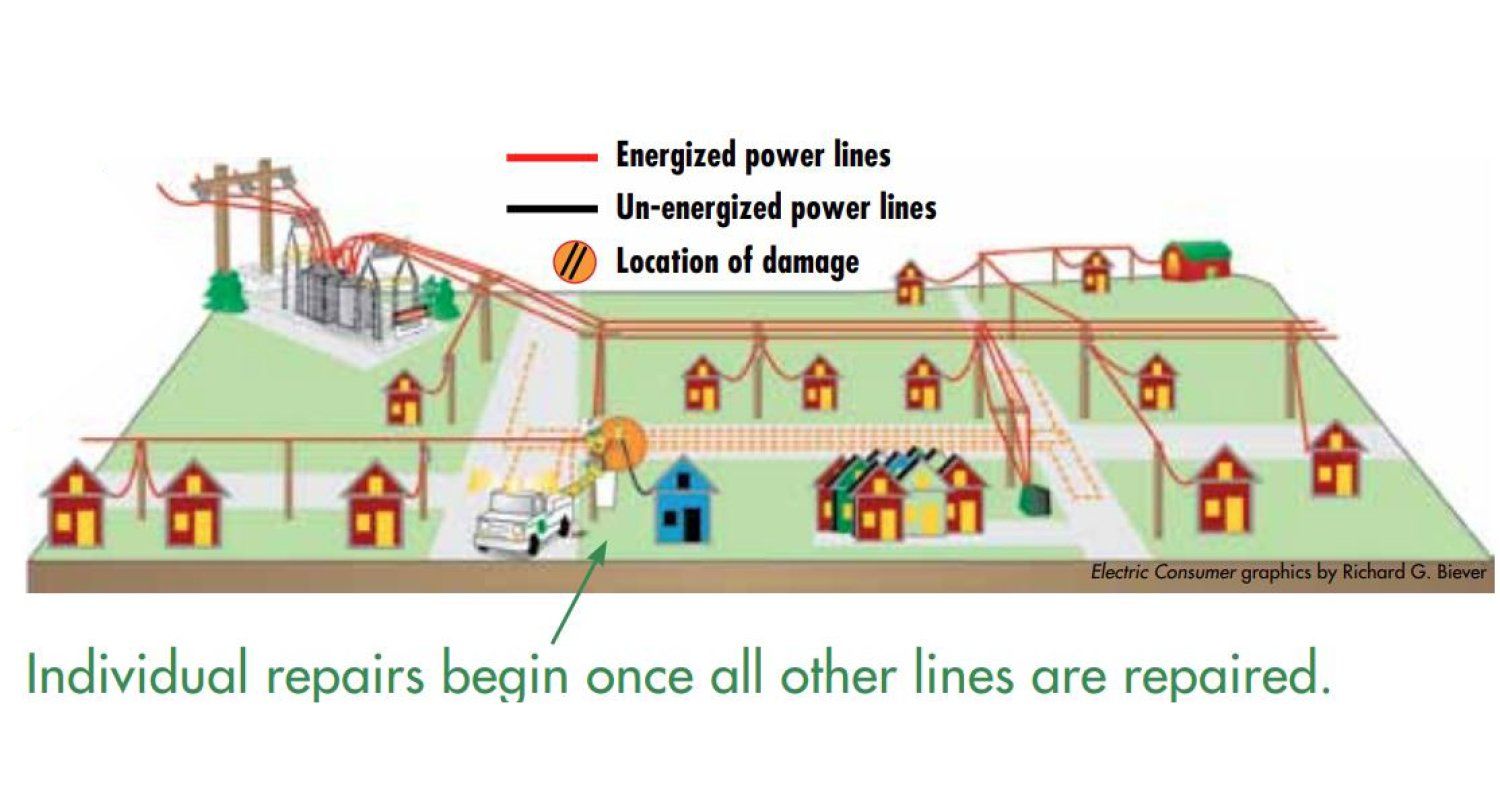
Step 5
Only after the tap lines are repaired does the crew start to work on individual service lines. The crew has been past the blue home more than three times and could have stopped to restore power anytime after the first main line was repaired and electricity was flowing to the pole nearby. But it's not fair to other members for a crew to spend hours fixing one outage when the crew can move down the road and restore power to dozens of homes in the same amount of time.
